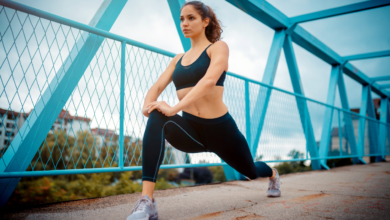Pigeon Pose (Eka Pada Rajakapotasana)
Pigeon Pose (Eka Pada Rajakapotasana): Hip Opener and More

Pigeon Pose (Eka Pada Rajakapotasana) This pose stretches the hips and can help reduce stress.
What will be the benefits of Pigeon Pose (Eka Pada Rajakapotasana) in PCOD/PCOS ?
Pigeon Pose is a deep hip opener that offers several benefits for women with PCOS:
- Improved Flexibility: Stretches the hips, groin, and lower back.
- Reduced Stress: Helps to alleviate stress and anxiety, which can contribute to hormonal imbalances.
- Enhanced Digestion: Stimulates the digestive organs, aiding in digestion and nutrient absorption.
- Pain Relief: Can help relieve lower back pain and hip pain.
- Improved Posture: Regular practice can help improve posture.
How often should I do Pigeon Pose (Eka Pada Rajakapotasana) in PCOD/PCOS?
Aim to practice Pigeon Pose 2-3 times per week.
How much time should I do Pigeon Pose (Eka Pada Rajakapotasana) in PCOD/PCOS?
Hold the pose for 30-60 seconds on each side.
What precaution’s to be taken while doing Pigeon Pose (Eka Pada Rajakapotasana) by PCOD patients
· Consult Your Doctor: Before starting any new exercise regimen, especially if you have underlying health conditions, consult with your doctor.
· Listen to Your Body: Don’t push yourself too hard, especially if you feel pain.
· Modify the Pose: If you have knee or hip pain, use a blanket or bolster for support.
· Warm-up: Warm up your body with gentle stretches and light cardio before practicing this pose.
· Cool-down: Cool down with gentle stretches after practicing the pose.
What we can eat before and after Pigeon Pose (Eka Pada Rajakapotasana) specially for PCOD/PCOS patients
Before Pigeon Pose:
- Light Snack: A light snack like a banana or a handful of nuts can provide energy without weighing you down.
- Hydration: Ensure you’re well-hydrated by drinking water.
After Pigeon Pose:
- Nutritious Meal: A balanced meal with complex carbohydrates, lean protein, and healthy fats can help replenish energy and support recovery.
- Hydration: Continue to drink water to replenish fluids lost during the practice.





